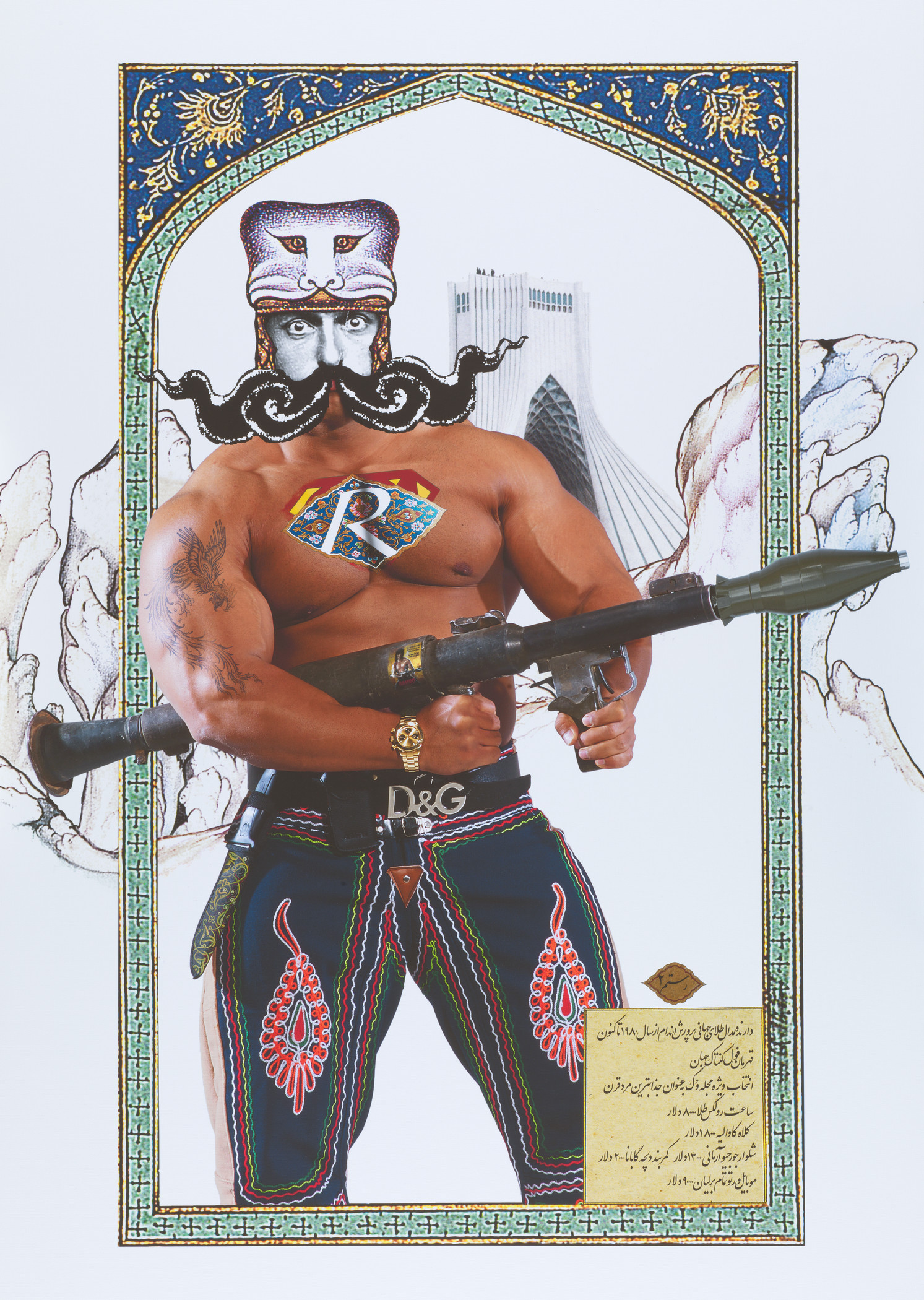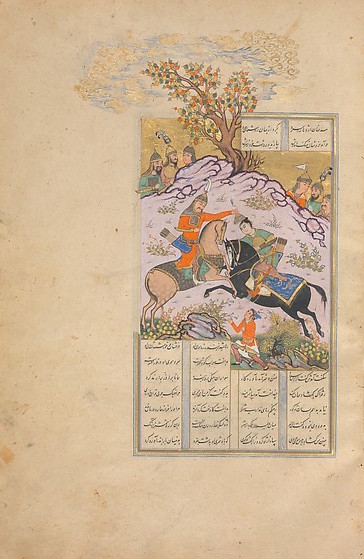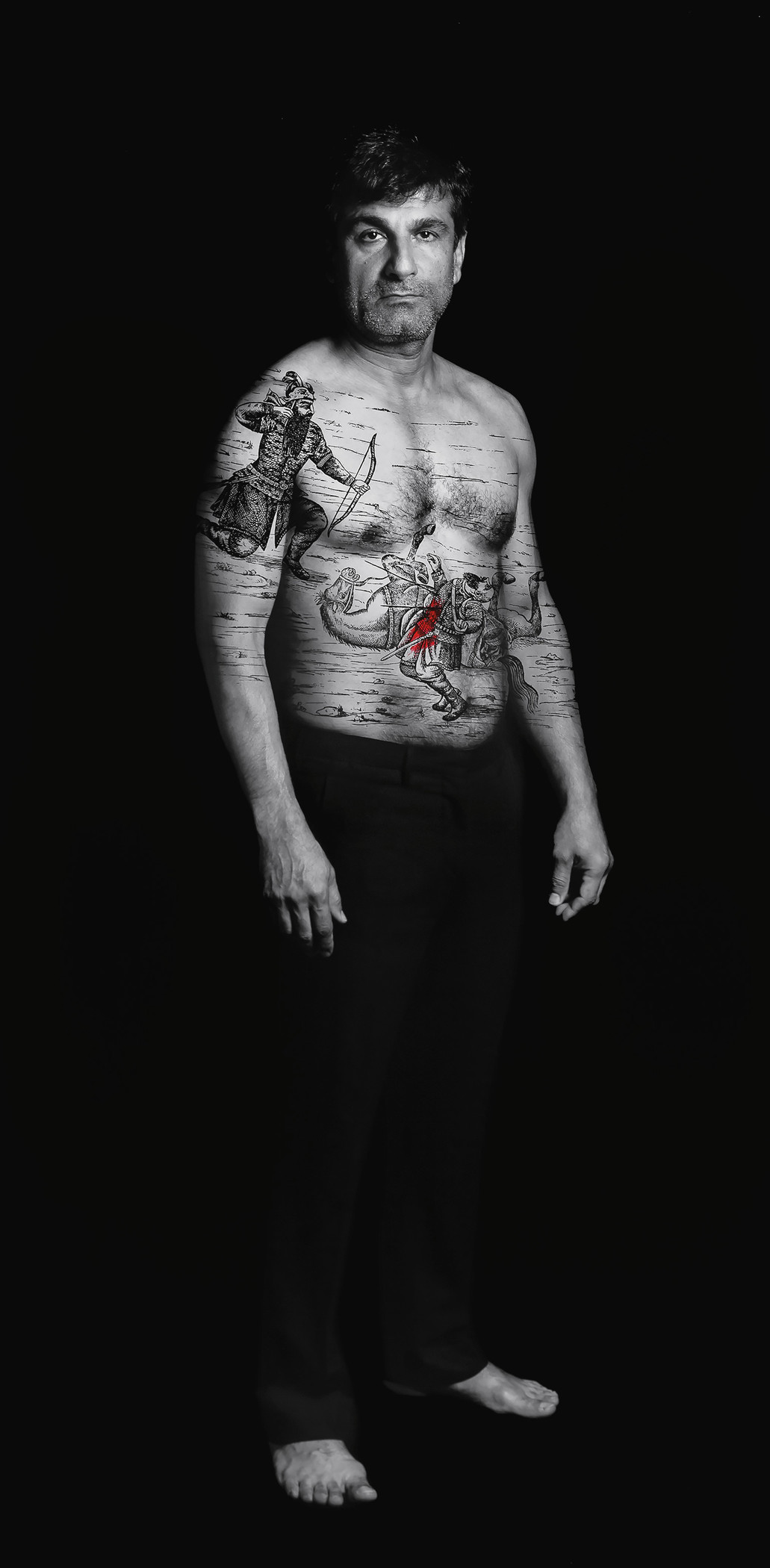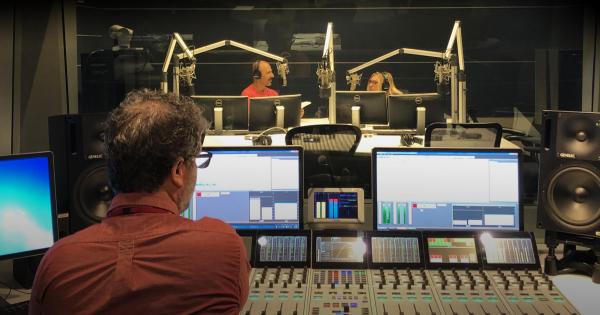I love podcasts; I am one of those people who will sit in my car engrossed in a podcast on the radio, listening until it is over. So, when I was approached by colleagues in LACMA’s Web and Digital Media Department about doing a podcast in connection with the exhibition In the Fields of Empty Days: The Intersection of Past and Present in Iranian Art, I immediately said yes. I thought this would be a wonderful way of amplifying the theme of the exhibition and extending its frame beyond the museum walls. My one concern was that it not be too serious-minded or pedantic. The exhibition, which presents both historical and contemporary Iranian art that highlight ways in which artists have used and continue to use the past as a metaphor for the present day, is designed and installed to be visually comprehensible despite its complex subject matter; it also includes contemporary works reflecting an often darkly humorous sensibility. I wanted the podcast likewise to be easily accessible to a broad audience and to perhaps evoke some of the same absurdity as the art, especially as I love comedy, particularly the stand-up variety.
.png)
Through the friend of a friend I connected with Maz Jobrani, an L.A.-based Iranian-American comedian, whose work I greatly admire. He agreed to participate; his humor as much as his Iranian heritage helped set the tone for and shape the podcast. We also were able to co-opt for interviews artists represented in the exhibition, such as Shirin Neshat and Nicky Nodjoumi, both based in New York, and Siamak Filizadeh in Tehran. We secured as well other individuals with a personal or professional interest in Iran, including my long-time friends and colleagues Sheila Blair from Boston College and Massumeh Farhad of the Freer and Sackler Galleries at the Smithsonian Institution, along with friend and LACMA donor, journalist, and activist, Homa Sarshar. Added to this mix were San Francisco-based filmmaker Anahita Ghazvinizadeh and from San Francisco State University Persis Karim, whom I only know through their sonorous voices.

As is often true of complex, multifaceted projects that develop and unfold over time, this one took on a life of its own that moved far beyond its initial parameters, which had primarily to do with Iranian art. The four episodes titled Time & Again repeat little of the same information from the exhibition. Rather they explicate, interpret, and expand on some of its main ideas primarily through discussions of the medium of poetry—perhaps the most inherently Iranian vehicle of the many manifestations of Persian culture.

Fortuitously, Maz had recently begun reading with his nearly 10-year-old son an English translation of the Book of Kings (or Shahnama), a famous epic poem recounting the tales of the pre-Islamic kings and heroes of Iran. Subject matter from the Book of Kings is reflected in or inspired many of the contemporary works in the exhibition, which includes as well historical manuscripts and illustrations from this key work of Persian literature. This interconnection helped provide easy entrée for Maz’s narration as well as his commentary on the pre-recorded discussions, which ranged from Game of Thrones to hero worship (and its pitfalls) to rap music. Iranian art did find its way into the final episode but even then, I brought the discussion back to poetry, this time modern Persian poetry, in talking about my inspiration for the exhibition title—In the Fields of Empty Days.

Listeners will get to decide on whether the podcasts are effective or thought-provoking or entertaining. For me, it was an intriguing experience not only because it gave me insight into how podcasts are created but also because it forced me to let go of my own preconceptions of how the ideas I shaped through the exhibition could be reinterpreted and recontextualized by other voices.
In the Fields of Empty Days: The Intersection of Past and Present in Iranian Art is on view in BCAM through September 9, 2018. Listen to Time & Again on iTunes or wherever you get your podcasts.



